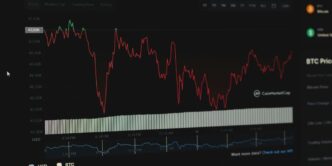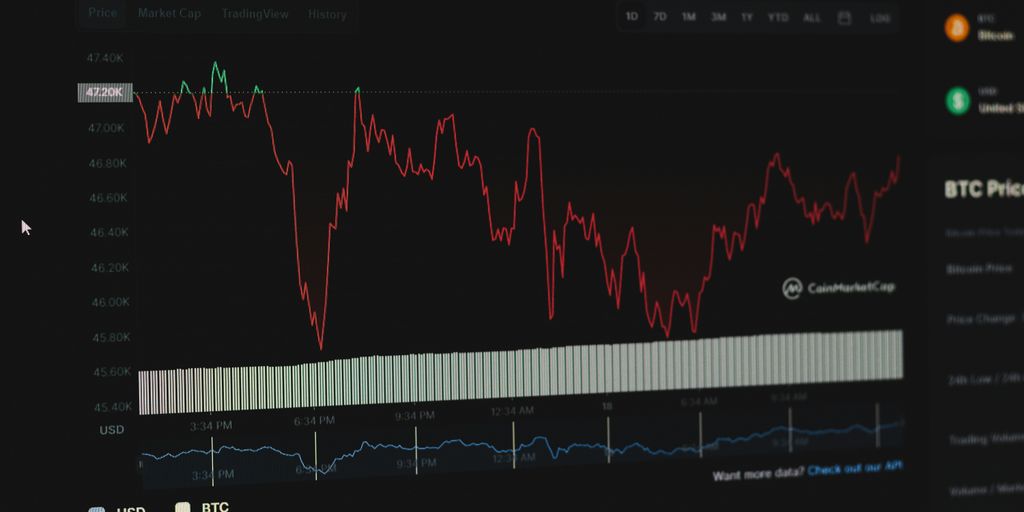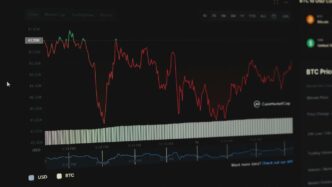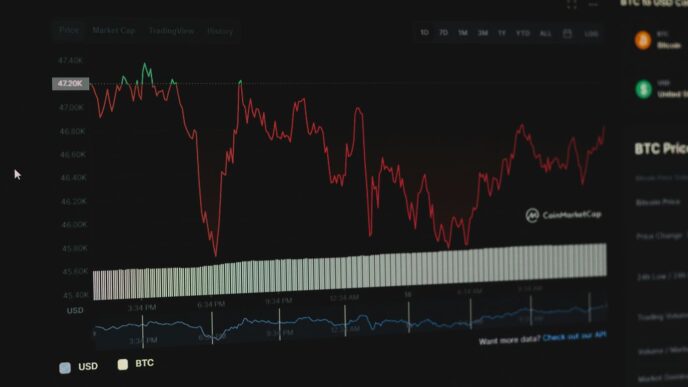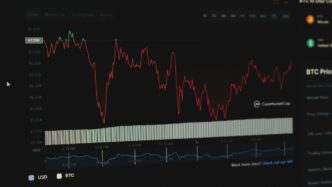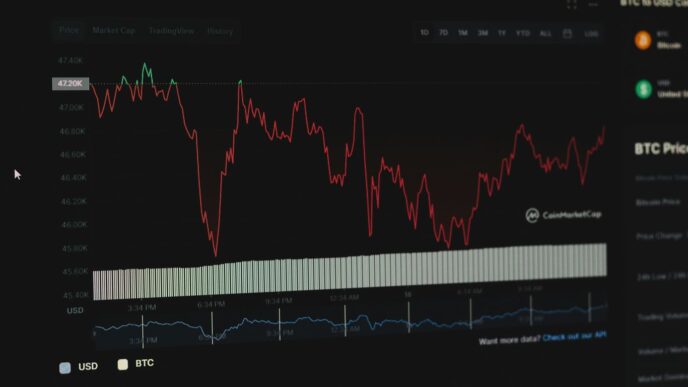The latest jobs report today is out, and it’s giving us a lot to think about. We saw some numbers that weren’t quite what folks were expecting, and that always gets people talking about what it means for the economy and, of course, for our money. It’s like looking at a weather report – you see the sunshine, the clouds, and maybe a little bit of rain, and you try to figure out if you need an umbrella or sunglasses. Let’s break down what this jobs report today is telling us.
Key Takeaways
- The economy added 73,000 jobs in July, falling short of the 117,500 jobs economists had predicted. Plus, job gains from May and June were significantly lowered after review.
- While companies aren’t letting people go in big numbers, they also aren’t hiring at a fast pace. It seems like a bit of a holding pattern.
- Average hourly pay went up by 3.9% over the last year. This is good because it means people’s paychecks are growing faster than prices are going up, which helps with everyday costs.
- The rate of people participating in the job market went down a bit. This means fewer people are working or actively looking for work compared to the total population.
- Things like trade policy worries and higher interest rates might be slowing down the job market. Because of this, many investors are now expecting the Federal Reserve to lower interest rates at least twice by the end of next year.
Understanding Today’s Jobs Report
Alright, let’s break down what this latest jobs report is telling us. It’s always a big deal, and this month is no exception. We’re seeing some shifts that are important to pay attention to.
July Job Gains Miss Expectations
So, the big headline is that the economy added 73,000 jobs in July. Now, that number is lower than what most economists were predicting. They were generally expecting an increase closer to 117,500. It’s not a huge miss, but it’s definitely a sign that job growth might be slowing down a bit. This comes after some pretty significant downward adjustments to the job numbers for May and June, which were revised quite a bit. It makes you wonder what’s really going on with hiring.
Revisions to Previous Months’ Data
Speaking of revisions, this is something we see pretty often with the jobs report. The numbers from previous months can get tweaked as more complete data comes in. This time around, the revisions for May and June were pretty substantial. We’re talking about a combined reduction of hundreds of thousands of jobs when you look at the updated figures. It’s a reminder that these monthly reports are estimates, and they often get refined. This can make it a bit tricky to get a perfectly clear picture month-to-month, especially when the economy is changing.
Unemployment Rate Stability
On a more stable note, the unemployment rate has been holding pretty steady. In July, it ticked up just slightly to 4.2%, from 4.1% in June. For most of this year, it’s been hovering in that 4% to 4.2% range. This level of unemployment is generally considered consistent with recent economic conditions, except for that very brief period during the early part of the pandemic. While job creation might be a bit softer, it’s encouraging that a large number of people aren’t suddenly losing their jobs, at least not based on the initial claims data. It suggests that, for the most part, companies aren’t aggressively cutting staff right now, even if they’re not hiring at a rapid pace either. This stability is a key piece of the puzzle when we look at the overall health of the job market. It’s also worth noting that job openings are still quite high, meaning there are more positions available than people actively looking for work, which is an interesting dynamic. This could point to some difficulties in matching job seekers with available roles, perhaps due to skills mismatches or employers being more selective. The impact of things like tariff uncertainty on the broader economy, including sectors like manufacturing in Ontario, is something to keep an eye on as well.
Key Economic Indicators in the Report
When we look at the jobs report, there are a few key numbers that really tell us what’s going on with the economy. It’s not just about the total number of jobs added, though that’s a big part of it. We also need to check out how much people are getting paid and if more people are looking for work or have stopped looking altogether.
Average Hourly Earnings Growth
So, how much are people earning? The report shows that average hourly earnings went up by 3.9% over the last year. This is pretty much in line with what we’ve seen lately. It means that, on average, paychecks are getting a bit bigger, which is good news for people’s spending power. Even though the job market might be slowing down a little, wages are still growing faster than prices, which helps consumers keep up.
Labor Force Participation Rate Trends
This is about how many people are either working or actively looking for a job. In July, this rate dipped a bit, down to 62.2%. It’s not a huge change, but it does mean fewer people are in the workforce compared to a few months ago. When fewer people are looking for jobs, it can sometimes mean it’s harder for companies to find workers, but so far, that hasn’t really pushed up wages dramatically. It’s a bit of a mixed signal, really.
Sector-Specific Employment Changes
It’s also interesting to see where the jobs are being added or lost. Health care and social assistance sectors are still hiring quite a bit, which makes sense given the ongoing needs in those areas. On the flip side, the federal government has been cutting jobs, and that trend continued. This is something to keep an eye on, especially as some of these cuts might not fully show up in the numbers right away.
Market Reactions to the Jobs Report Today
So, how is the market reacting to all this jobs data? It’s a bit of a mixed bag, honestly. We saw job growth come in lower than expected for July, and the numbers for the previous couple of months got a pretty significant haircut. This has investors thinking the Federal Reserve might be more inclined to cut interest rates sooner rather than later. The anticipation of at least two rate cuts by the end of 2025 is definitely a big talking point.
When you look at the stock market, it’s like a seesaw. Some days it’s up, some days it’s down, and this report adds another layer of uncertainty. Companies aren’t exactly laying off tons of people, but they’re also not hiring like gangbusters. It feels like a cautious approach from employers, and that definitely plays into how stocks move.
And then there are the bond yields. They’re sensitive to all this talk about interest rates. If the Fed is expected to lower rates, bond yields tend to follow suit. It’s a whole chain reaction, really. We’re watching to see if this trend continues as more economic information rolls in.
Here’s a quick rundown of what we’re seeing:
- Investor Sentiment: Generally leaning towards expecting rate cuts due to the softer job numbers.
- Stock Market: Volatile, with a cautious undertone as businesses seem to be in a holding pattern.
- Bond Yields: Moving in response to interest rate expectations, generally trending lower.
It’s a complex picture, and this jobs report is just one piece of the puzzle. We’ve also got tariffs and other economic factors swirling around, making it tough to predict exactly where things are headed.
Factors Influencing the Labor Market
So, what’s really shaping the job market right now? It’s not just one thing, but a mix of big-picture economic forces.
First off, there’s the whole tariff situation. When trade policies change, it can create a ripple effect across industries. Some businesses might face higher costs for imported materials, and that uncertainty can make them hesitant to hire or expand. It’s a bit of a waiting game to see how these policies fully play out and impact jobs.
Then you have the Federal Reserve and its interest rate decisions. The Fed adjusts rates to manage inflation and keep the economy humming along. Higher rates can slow down borrowing and spending, which might cool off hiring. Conversely, lower rates can encourage more business activity. It’s a delicate balancing act they’re always trying to manage.
Immigration policies are another piece of the puzzle. Changes here can affect the availability of workers in certain sectors. For instance, industries that have relied on immigrant labor might see shifts in their workforce if policies change. This could lead to tighter labor markets in those specific areas, like construction, where finding enough workers can already be a challenge. We saw the unemployment rate stay steady at 4.2 percent in July, but shifts in labor availability can still impact hiring dynamics. It’s interesting to see how these different factors interact, creating a complex picture for job seekers and employers alike. Understanding these influences helps us make sense of the overall job market trends, like the slight decrease in the labor force participation rate trends we’ve observed.
Interpreting the Job Market’s Health
So, how’s the job market actually doing? It’s a bit of a mixed bag, honestly. We’re seeing fewer jobs being added each month, and companies seem to be slowing down their hiring pace. It’s not like the hiring frenzy we saw a while back. Plus, there have been some pretty big downward adjustments to the job numbers from previous months, which tells us things might not have been as strong as we initially thought.
Signs of a Cooling Labor Market
It really looks like the job market is cooling off. Job gains have been lower than expected lately, and when they revised past reports, they actually took away a bunch of jobs that were previously counted. This suggests employers are getting more cautious. It’s not a full stop, but definitely a slowdown.
Employer Hiring Hesitancy
Companies seem to be holding onto their current workers more tightly. While there are still plenty of job openings out there – more openings than people looking for work, actually – businesses are having a harder time finding the right people. This could mean a few things: maybe there’s a skills gap, or maybe employers are just being more careful about who they bring on board. It’s like they’re looking, but they’re also a bit hesitant to pull the trigger on new hires.
Long-Term Unemployment Concerns
One thing that’s a bit worrying is that more people are staying unemployed for longer periods. This suggests that once someone is out of a job, it’s taking them longer to find a new one. It’s not just about finding a job, but finding one that fits their skills and experience. This trend can make it harder for those workers to get back into the workforce, and it’s something to keep an eye on as the economy shifts.
Navigating the Economic Landscape
Okay, so the jobs report is out, and it’s giving us a bit of a mixed bag. On one hand, we’re seeing some signs that the economy might be cooling down, which isn’t necessarily a bad thing. It could mean the Federal Reserve might start thinking about lowering interest rates, and that’s usually good news for the stock market. Think about it, lower rates can make it cheaper for companies to borrow money, potentially leading to more investment and growth. Plus, consumers might feel a bit more confident spending if borrowing costs go down.
Consumer Resilience Amidst Inflation
Even with inflation still hanging around, people seem to be holding up pretty well. We’re not seeing a huge drop-off in spending, which is a good sign for businesses. It suggests that even though prices are higher for some things, folks are still finding ways to buy what they need and maybe a few things they want. This kind of consumer strength is really what keeps the economy moving.
Potential Sector Opportunities
When the economy shifts, some areas tend to do better than others. With talk of potential rate cuts, sectors that are sensitive to interest rates, like homebuilders and banks, could see a boost. Also, companies that rely on consumer spending, like those in the consumer discretionary sector, might do well if people keep opening their wallets. It’s worth keeping an eye on these areas.
Strategic Portfolio Adjustments
Given all this, it might be a good time to look at your investments. If you’re holding a lot of stocks that do well when rates are high, you might want to think about diversifying. Maybe adding some investments that tend to perform better when rates are falling could be a smart move. It’s not about making huge changes overnight, but just making sure your portfolio is set up to handle whatever the economy throws at it. Talking to a financial advisor can really help figure out the best approach for your specific situation.
Wrapping Up: What This Jobs Report Means
So, what’s the big picture here? The latest jobs report shows the economy is adding jobs, but at a slower pace than folks expected. Plus, those earlier months got a bit of a haircut in the numbers. It seems like companies are being more careful, not really cutting back but also not hiring like crazy. Things like tariffs and interest rates are probably playing a role in this, making businesses a bit hesitant. On the bright side, wages are still growing a bit faster than prices, which is good for our wallets. But, some people are still finding it tough to get back into work after being unemployed for a while. We saw good job growth in places like healthcare, but the government sector is still shrinking. All in all, it’s a mixed bag, and it looks like everyone’s watching closely to see what happens next, especially with the Federal Reserve’s next moves.
Frequently Asked Questions
What is the jobs report?
The jobs report tells us how many new jobs were created in the last month. It also gives us information about how many people are looking for work and how much they are earning. This helps us understand if the economy is growing or slowing down.
What happened with job growth in July?
In July, fewer jobs were added than expected. Also, the numbers for the previous two months were lowered quite a bit. This suggests that companies might be hiring less than before.
What is the unemployment rate?
The unemployment rate stayed about the same, around 4.2%. This means that most people who want a job can find one, even though companies are hiring a bit slower.
Are people earning more money?
Average hourly pay went up by 3.9% over the last year. This is good because it means people are earning more money, and this raise is bigger than the rate of price increases (inflation).
What makes companies hire less?
Things like trade disagreements (tariffs) and changes in government rules can make businesses unsure about the future. This uncertainty might make them more careful about hiring new people.
How does the jobs report affect interest rates?
When the jobs report shows slower hiring, it might make the Federal Reserve (the country’s central bank) think about lowering interest rates. Lower interest rates can make it cheaper for people and businesses to borrow money, which can help the economy grow.

